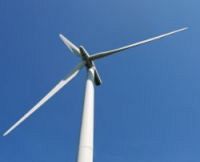

Despite a significant rise in the dangerous greenhouse gas, Sulphur Hexafluoride (SF6), there has been change in the North Sea regarding the methods to generate electricity.
Situated in the North Sea around 43 kilometres from the Suffolk Coast, the company Scottish Power Renewables has installed one of world's biggest wind farms, where the turbines will be free of SF6 gas. SF6 is widely used in the electrical industry in order to prevent short circuits and accidents, and is widely reported as the most powerful greenhouse gas known to humanity. More information on SF6 can be found here.
East Anglia One will see 102 of these towering generators erected, with the capacity to produce up to 714 Megawatts of power by 2020 - this is enough to supply half a million homes. Previously, an installation like this would have had to have used SF6, necessary for the switchgear to prevent the electrical accidents that can lead to fires. Each turbine would have contained around 5 Kilograms of SF6, which, if leaked, would add the equivalent of 117 tonnes of carbon into the atmosphere - this is the same as the annual emissions from around 25 cars.
Costa Pirgousis, a spokesperson for the company, has said, "In this case we are using a combination of clean air and vacuum technology within the turbine. It allows us to still have a very efficient, reliable, high-voltage network but to also be environmentally friendly."
He went on to say, "Once there are viable alternatives on the market, there is no reason not to use them. In this case, we've got a viable alternative and that's why we are using it."
Such change remains slow, seeing limitations to companies trying to reduce the amount of SF6 used. There is a giant offshore substation at the heart of East Anglia One, which still uses high quantities of the dangerous gas, and connects all 102 turbines to it.